Het navigeren van steile hellingen op ski's kan lastig zijn, vooral met langere uitrusting die moeilijker te beheersen is in krappe ruimtes. Kortere ski's, zoals de Snowfeet* WALKSKI Backcountry Touring Skis, maken het makkelijker om de controle te houden dankzij hun compacte ontwerp van 100 cm. Deze ski's laten je scherpe bochten, ijzige plekken en smalle paden met minder moeite aan, terwijl ze je veilig en stabiel houden. Bovendien zijn ze lichtgewicht en werken ze met gewone schoenen, dus je hebt geen zware, gespecialiseerde uitrusting nodig.
Hier is de korte samenvatting:
- Korte lengte (100 cm): Ideaal voor steil, technisch terrein.
- Lichtgewicht ontwerp: Vermindert vermoeidheid tijdens lange tochten.
- Universele bindingen: Gebruik ze met wandel-, winter- of snowboardboots.
- Makkelijk mee te nemen: Past in een standaard rugzak voor probleemloze draagbaarheid.
Of je nu een beginner bent of een ervaren skiër, het beheersen van steile hellingen komt neer op het gebruik van de juiste uitrusting en technieken. Lees verder voor tips over kantcontrole, gewichtsverdeling en lichaamshouding om veilig en vol vertrouwen te skiën.
Leer 6 technieken om steile hellingen te skiën | Beginner Freeride Vlog
Uitdagingen bij het oversteken van steile hellingen
Steile hellingen brengen een heel nieuw niveau van moeilijkheid bij het skiën. Je hebt niet alleen te maken met de helling zelf - je komt ook harde, ijzige plekken en zachte, onvoorspelbare sneeuw tegen. Deze omstandigheden dwingen je om constant je techniek aan te passen, je gewicht te verplaatsen en de druk op de kanten te regelen. Het is een evenwichtsoefening, en zelfs de kleinste fout kan je sneller dan gewenst naar beneden laten suizen. Bovendien schiet traditionele uitrusting vaak tekort in deze veeleisende omgevingen.
Problemen met traditionele ski's en snowboards
Laten we eerlijk zijn: traditionele ski's zijn niet gemaakt voor krappe, steil terrein. Ze vereisen meestal een grote draaicirkel, wat het navigeren door smalle paden of technische lijnen echt lastig kan maken. Bovendien kunnen hun zware bindingen en schoenen je snel vermoeien, waardoor je minder controle hebt wanneer je die het meest nodig hebt.
Snowboards brengen hun eigen uitdagingen met zich mee. Door de vaste zijwaartse houding is het moeilijker je balans aan te passen, vooral op oneffen of onvoorspelbare ondergronden. Het ontbreken van onafhankelijke beenbeweging maakt soepel doorkruisen lastiger. En vergeet niet de lompe, gespecialiseerde boots die het ongemak tijdens lange backcountry-avonturen vergroten.
Hoe de Snowfeet* WALKSKI deze problemen oplost

Hier schittert de Snowfeet* WALKSKI. Met slechts 100 cm (39 inch) lengte is de WALKSKI compact en wendbaar, perfect voor steil, lastig terrein. Het kortere ontwerp maakt strakke, precieze bochten mogelijk, zodat je gemakkelijk obstakels en smalle ruimtes kunt navigeren waar traditionele ski's zouden falen.
De lichte constructie is een andere game-changer. Het vermindert vermoeidheid, waardoor je de energie behoudt om je techniek scherp te houden en veilig te blijven tijdens langere tochten in de backcountry. Een van de beste eigenschappen? Het universele free-heel binding systeem. Het werkt met gewone wandelschoenen, winterlaarzen of snowboardboots, zodat je niet vastzit aan zware, oncomfortabele skischoenen.
De lengte van 100 cm biedt een perfecte balans tussen stabiliteit en wendbaarheid. In tegenstelling tot traditionele alpineski's, die vooral ontworpen zijn voor geprepareerde pistes, is de WALKSKI gebouwd om de onvoorspelbare, uitdagende omstandigheden van steil backcountry terrein aan te kunnen. Het pakt kantencontrole en vermoeidheidsproblemen direct aan, waardoor je het vertrouwen krijgt om zelfs de zwaarste hellingen aan te pakken.
Kerntechnieken voor veilige doorkruising
Navigeren op steile hellingen met je Snowfeet* WALKSKI komt neer op het beheersen van drie belangrijke technieken. Deze houden je stabiel en in controle, zelfs wanneer het terrein je grenzen opzoekt. Dankzij het compacte 39-inch ontwerp van de WALKSKI zijn deze bewegingen makkelijker uit te voeren vergeleken met de uitdagingen van traditionele lange ski's. Laten we het opsplitsen: precieze kantencontrole, gebalanceerde gewichtsverdeling en de juiste lichaamshouding zijn je belangrijkste tools om veilig te blijven op die steilere stukken.
Technieken voor randcontrole
Je randen zijn je beste vriend op steile hellingen. De kortere lengte van de WALKSKI geeft je snellere, meer responsieve randbetrokkenheid, wat minder log aanvoelt dan bij traditionele ski's. De eerste stap? Houd je ski's loodrecht op de vallijn - dit maximaliseert je randgrip tegen de helling.
Om die grip vast te houden, druk je je bergop randen in de sneeuw door je enkels en knieën naar de helling te rollen. De compacte lengte van 100 cm van de WALKSKI betekent dat je niet veel druk hoeft te zetten om solide randcontrole te krijgen. Vergelijk dat met traditionele ski's van meer dan 170 cm lang, die veel meer inspanning vragen om hun volledige lengte te benutten.
Als je een ijzig stuk tegenkomt, neem het dan rustig en beheerst. Gebruik een stap-voor-stap methode: plant eerst je bergop ski om grip te krijgen, en lijn dan je bergaf ski uit. Als je voelt dat je randen wegglijden, pas dan aan door je knieën dieper in de helling te kantelen om het randcontact te vergroten.
Methoden voor gewichtsverdeling
Je gewichtsverdeling goed krijgen is cruciaal voor balans en controle. Met de WALKSKI streef je ernaar ongeveer 60% van je gewicht op je bergaf ski te houden en 40% op je bergop ski. Deze opstelling helpt voorkomen dat je bergop rand blijft haken terwijl je bergaf rand stevig in de sneeuw staat.
Verplaats je gewicht lichtjes naar achteren vanaf het midden, vooral bij zachte of onvoorspelbare sneeuw. Dit voorkomt dat je skitips in de sneeuw duiken en geeft je meer controle voor plotselinge aanpassingen. Dankzij het lichte ontwerp van de WALKSKI voelt het verplaatsen van je gewicht makkelijker aan dan bij zwaardere, traditionele ski's die je balans kunnen verstoren.
Bij het bewegen over bijzonder steile stukken, focus op vloeiende gewichtsverplaatsingen tussen de ski's. Het universele bindingensysteem van de WALKSKI maakt natuurlijke enkelbeweging mogelijk, waardoor deze overgangen vloeiender aanvoelen vergeleken met de stijve bindingen van alpine ski's.
Met de gewichtsverdeling goed ingesteld, wordt je algehele houding het laatste puzzelstuk.
Juiste lichaamshouding
Je lichaamshouding speelt een grote rol in hoe goed je steil terrein aankunt. Houd je knieën gebogen en klaar om te bewegen - zie ze als ingebouwde schokdempers die zich aanpassen aan de veranderingen in de helling. Je bovenlichaam moet iets bergafwaarts gericht zijn, in plaats van loodrecht op de helling te blijven zoals je misschien doet op geprepareerde pistes.
Behoud een lage zwaartepunt door je handen naar voren en iets bergafwaarts te houden. Deze houding houdt je in balans en klaar om te reageren als de sneeuwcondities plotseling veranderen. Het houdt ook je spieren actief, zodat je altijd voorbereid bent om aan te passen.
Gebruik je stokken voor balans, niet om jezelf vooruit te duwen. Plant ze iets naar beneden om je bewegingen te stabiliseren. Met het kortere, wendbaardere ontwerp van de WALKSKI zul je merken dat je minder op je stokken hoeft te vertrouwen dan bij langere, traditionele ski's. Dit geeft je betere hefboomwerking en controle, waardoor je oversteek veiliger en soepeler wordt.
Snowfeet* WALKSKI versus traditionele ski's en snowboards
Als je steil terrein aanpakt, kan je uitrusting het verschil maken tussen een goede of slechte ervaring. De Snowfeet* WALKSKI, met zijn compacte lengte van 39 inch (99 cm), biedt een frisse benadering om uitdagende hellingen te navigeren.
Kenmerkenvergelijkingstabel
Hier is een snelle blik op hoe de Snowfeet* WALKSKI zich verhoudt tot traditionele alpine ski's en snowboards:
| Kenmerk | Snowfeet* WALKSKI | Traditionele alpine ski's | Snowboards |
|---|---|---|---|
| Lengte | 39 inch (99 cm) | Ongeveer 67–75 inch | Ongeveer 59–65 inch |
| Gewicht | Lichtgewicht en compact | Zwaarder, vooral met bindingen | Over het algemeen omvangrijker |
| Wendbaarheid | Snelle, responsieve bochten | Meer inspanning nodig voor scherpe bochten | Beperkt op steile traverses |
| Schoencompatibiliteit | Werkt met gewone winter- of wandelschoenen | Vereist gespecialiseerde skischoenen | Ontworpen voor snowboardboots |
| Draagbaarheid | Gemakkelijk mee te nemen in een rugzak | Heeft een skitas of dakdrager nodig | Moeilijker te vervoeren |
| Leercurve | Eenvoudig en intuïtief | Steilere leercurve | Gemiddelde moeilijkheidsgraad |
| Terrein veelzijdigheid | Geweldig voor gevarieerd, steil terrein | Het beste op geprepareerde pistes | Moeilijkheden op steile hellingen |
De Snowfeet* WALKSKI blinkt uit op steil terrein waar traditionele uitrusting soms lastig is. Alpineski's, met hun langere lengte en extra gewicht, vereisen meer inspanning om snelle bochten te maken vanwege hun rotatie-inertie. De WALKSKI daarentegen is ontworpen voor wendbaarheid, waardoor scherpe, gecontroleerde bochten en precieze kantencontrole mogelijk zijn, zelfs op onvoorspelbare hellingen.
Snowboards zijn leuk, maar hebben hun uitdagingen op steil terrein. Hun vaste stand maakt snelle richtingsveranderingen lastig, wat beperkend kan zijn als je snel moet bijsturen. De WALKSKI overbrugt deze kloof door de wendbaarheid van ski's te combineren met het gemak van een compact ontwerp.
Een ander opvallend kenmerk van de Snowfeet* WALKSKI is de eenvoud in het backcountry. Traditionele setups omvatten vaak veel uitrusting en overgangen - denk aan uphill skinning met gespecialiseerde schoenen en bindingen, en dan overschakelen naar een downhill configuratie. De WALKSKI elimineert dat gedoe met ingebouwde klimvellen en universele free-heel bindingen, waardoor overgangen naadloos verlopen zodat je je kunt blijven focussen op het avontuur.
Bovendien is het lichte gewicht een gamechanger voor lange tochten. Minder gewicht betekent minder vermoeidheid, wat je betere controle en vertrouwen geeft, zelfs onder de meest veeleisende backcountry omstandigheden. Snowfeet* WALKSKI draait helemaal om het toegankelijker en leuker maken van steil terrein.
sbb-itb-17ade95
Tips voor verschillende vaardigheidsniveaus
Tips voor beginners
Als je net begint met steil terrein, is het belangrijk om het simpel en beheersbaar te houden. Focus op het beheersen van balans, het controleren van je snelheid en het leren van effectieve bochten. Het compacte en lichte ontwerp van de Snowfeet* WALKSKI maakt het makkelijker te hanteren dan traditionele langere ski's, wat beginners een meer gecontroleerde ervaring geeft.
Begin op zachte hellingen om je zelfvertrouwen op te bouwen. Oefen korte, bewuste bochten om je snelheid te regelen en een stevige grip op de kanten te behouden. Deze praktische oefening leert je snel aan te passen als je grip begint te slippen op steilere stukken.
Houd je houding laag en gebalanceerd - het is een redder in nood bij het herstellen van kleine fouten. En hier is het beste: je kunt je gewone winterlaarzen gebruiken met Snowfeet* WALKSKI, dus je hoeft niet meteen te investeren in gespecialiseerde uitrusting. Beheers deze basisvaardigheden en je bent klaar om steilere hellingen veilig en met meer plezier aan te pakken. Zodra je het onder de knie hebt, kun je beginnen met het verkennen van meer geavanceerde technieken.
Draagbaarheid en gebruik op meerdere terreinen
Draagbaarheid in de natuur
Met slechts 99 cm (39 inch) lang passen Snowfeet* WALKSKI gemakkelijk in een rugzak, wat ze superhandig maakt vergeleken met omvangrijke traditionele backcountry ski's. Deze compacte maat betekent dat je naar afgelegen toppen kunt wandelen zonder het gedoe van het meeslepen van zware uitrusting.
"We houden allebei van de grootte en onze toegenomen flexibiliteit om te bewegen zoals we willen dankzij de grootte." - Paul DeCecco, Klant
In tegenstelling tot traditionele alpineski's die veel omvangrijke uitrusting vereisen, zijn Snowfeet* WALKSKI ontworpen om moeiteloos over te gaan van wandelen naar skiën. Hun slanke ontwerp opent nieuwe mogelijkheden om smalle paden en dichtbeboste gebieden te verkennen. Deze draagbaarheid maakt ze perfect voor allerlei avonturen in de natuur.
Multi-Terrain Prestaties
Snowfeet* WALKSKI schitteren niet alleen door hun draagbaarheid - ze presteren ook betrouwbaar op diverse terreinen. Hun kortere lengte geeft je betere controle en wendbaarheid op steile, technische hellingen of in snowparks. Dit betekent dat je gemakkelijk obstakels kunt navigeren en snel van richting kunt veranderen zonder moeite.
"Het duurde niet lang om aan deze kortere ski's te wennen, veel makkelijker dan de originele langere XC ski's die ik vroeger had!" - Martina MacLean, Klant
Deze klantervaringen laten zien hoe veelzijdig deze ski's echt zijn. Zelfs kleine ruimtes, zoals je achtertuin, kunnen veranderen in je persoonlijke skiparadijs. Snowfeet* WALKSKI gaan moeiteloos om met wisselende sneeuwcondities zoals gepakte poedersneeuw, korstige backcountry sneeuw of vroege seizoensplekken. Hun doordachte ontwerp zorgt voor consistente prestaties, waar je ze ook gebruikt.
Conclusie: Kies voor Snowfeet* WALKSKI op Steile Hellingen
Laten we het samenvatten. Als het gaat om het aanpakken van steile hellingen, brengt Snowfeet* WALKSKI iets wat lange ski's en snowboards simpelweg niet kunnen evenaren. Deze compacte toerski's bieden de precieze kantencontrole en snelle responsiviteit die je nodig hebt wanneer elke bocht telt op lastig terrein.
Denk er eens over na: traditionele alpine ski's zijn lang en zwaar, wat ze moeilijker maakt om te beheersen op krappe, technische traverses. Snowfeet* WALKSKI, met zijn kortere en lichtere ontwerp, geeft je de mogelijkheid om soepel en vol vertrouwen te bewegen. Je voelt je in controle, zelfs op die smalle plekken waar zwaardere uitrusting een last kan zijn. Bovendien is hun draagbaarheid een groot voordeel - geen gesjouw met oversized uitrusting die je vertraagt.
Korte ski's zoals deze zijn een echte game-changer. Door hun kortere lengte kun je snel bijsturen en op koers blijven, zelfs op de meest technische hellingen. Die wendbaarheid krijg je niet met traditionele uitrusting. En niet te vergeten: ze zijn makkelijk mee te nemen. Je kunt ze in je rugzak stoppen en op pad gaan om afgelegen, ongerepte hellingen te verkennen die met zwaardere uitrusting misschien onbereikbaar waren.
Of je nu een beginner bent die de kneepjes van het vak leert of een ervaren skiër die klaar is voor uitdagend terrein, Snowfeet* WALKSKI past zich aan jouw behoeften aan. Het eenvoudige ontwerp betekent dat je minder tijd kwijt bent aan het gedoe met je uitrusting en meer tijd hebt om te genieten van de sensatie van het skiën.
Voor je volgende avontuur op steile hellingen, kies je uitrusting die gebouwd is voor zowel veiligheid als prestaties. Snowfeet* WALKSKI bewijst dat kleinere uitrusting een grote impact kan hebben. Maak je klaar voor een veiliger en spannender backcountry-ervaring.
Veelgestelde vragen
Hoe bieden Snowfeet* WALKSKI toerski's betere veiligheid en controle op steile hellingen in vergelijking met traditionele alpine ski's?
Snowfeet* WALKSKI toerski's zijn ontworpen met veiligheid en controle in gedachten, vooral voor steile hellingen. Met een lengte van ongeveer 100 cm maakt hun compacte formaat ze veel makkelijker hanteerbaar dan traditionele alpineski's. Dit betekent dat je snellere, scherpere bochten kunt maken - perfect voor lastig terrein of ijzige stukken waar precisie cruciaal is.
Nog een groot pluspunt? Snowfeet* WALKSKI zijn superlicht en werken met je gewone winterlaarzen. Geen gedoe met zware, gespecialiseerde skischoenen. Deze combinatie van draagbaarheid en gebruiksgemak maakt ze een geweldige keuze voor iedereen - van beginners die vertrouwen willen opbouwen tot ervaren skiërs die ruige backcountry paden verkennen. Hun kortere ontwerp verhoogt niet alleen de stabiliteit maar helpt ook vermoeidheid te verminderen, waardoor ze een veiligere en toegankelijkere keuze zijn voor steile, uitdagende hellingen.
Welke technieken kunnen mij helpen kantencontrole en gewichtsverdeling te verbeteren bij het gebruik van Snowfeet* WALKSKI op steile hellingen?
Om het meeste uit je Snowfeet* WALKSKI op steile hellingen te halen, begin met een stevige, gebalanceerde houding. Houd je voeten ongeveer op schouderbreedte uit elkaar en plaats één voet iets voor de andere voor extra stabiliteit. Sta rechtop met je gewicht gecentreerd over het midden van je voeten, en houd je knieën licht gebogen - dit helpt je schokken op te vangen en aan te passen aan oneffen terrein.
Als het gaat om kantencontrole, richt je op vloeiende, gecontroleerde bewegingen. Rol geleidelijk op de ski-kant en verplaats meer gewicht naar je buitenste ski tijdens het draaien. Dit geeft je betere grip en precisie, vooral op ijzige of hobbelige ondergronden. De kortere lengte van Snowfeet* WALKSKI maakt het makkelijker om deze technieken te beheersen vergeleken met traditionele ski's of snowboards, wat je meer controle en wendbaarheid op de hellingen geeft.
Welke uitrusting of accessoires kunnen de prestaties van Snowfeet* WALKSKI verbeteren voor backcountry skiën?
Hoewel Snowfeet* WALKSKI al geweldig presteren op zichzelf, kan het toevoegen van een paar accessoires je backcountry ski-avonturen naar een hoger niveau tillen. Om te beginnen kunnen verstelbare skistokken je helpen in balans en controle te blijven, vooral op steile of oneffen hellingen. Als je ijzige of hard gepakte paden aanpakt, zijn lichte stijgijzers een goede keuze om je grip stevig en veilig te houden.
Wil je je uitrusting georganiseerd houden? Een compacte ski rugzak is perfect om essentials zoals een extra laag, wat snacks en water in op te bergen. Snowfeet* WALKSKI zijn al super draagbaar, maar in combinatie met de juiste uitrusting worden je tochten nog soepeler en leuker.








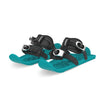

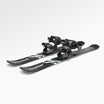



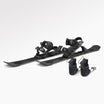






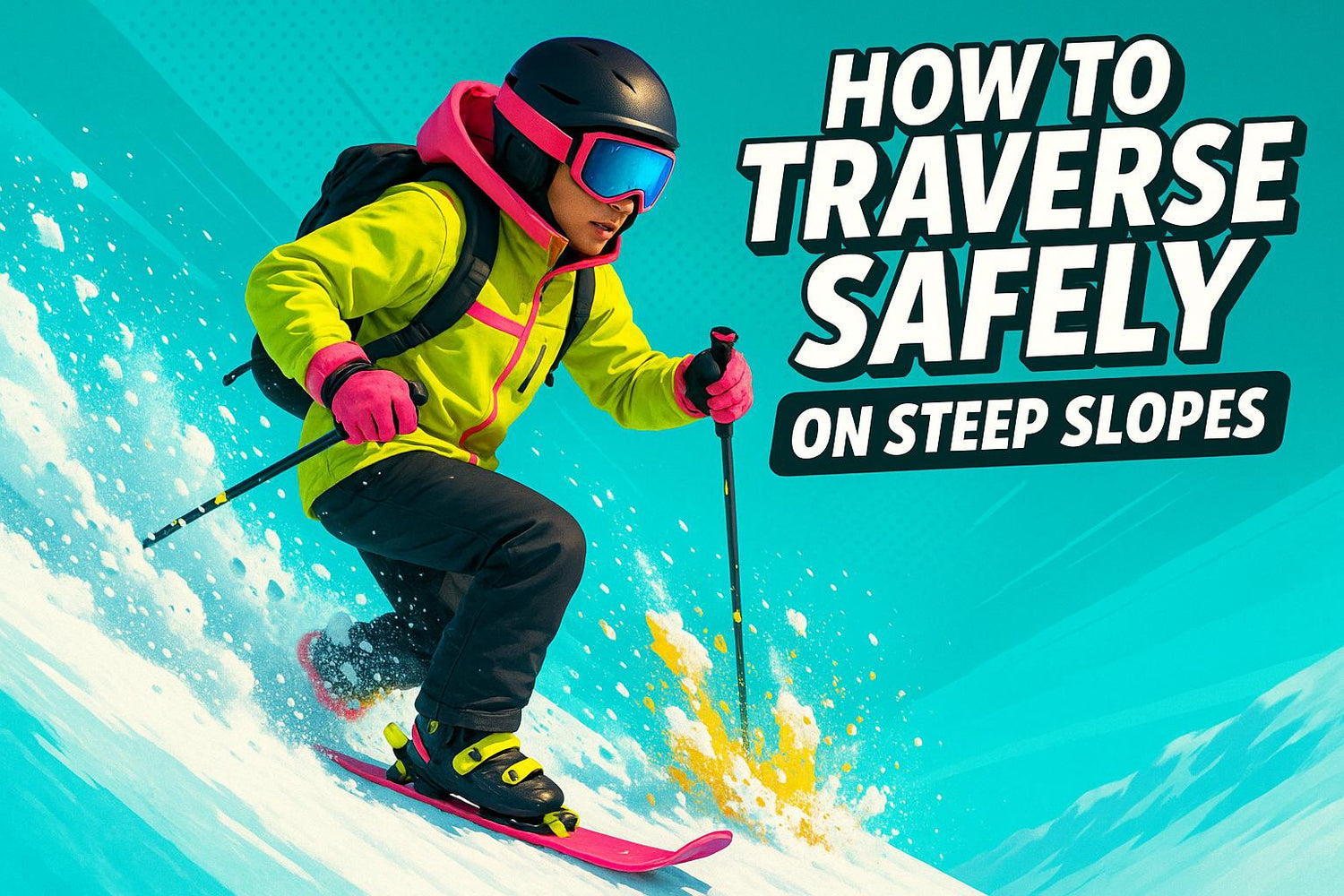
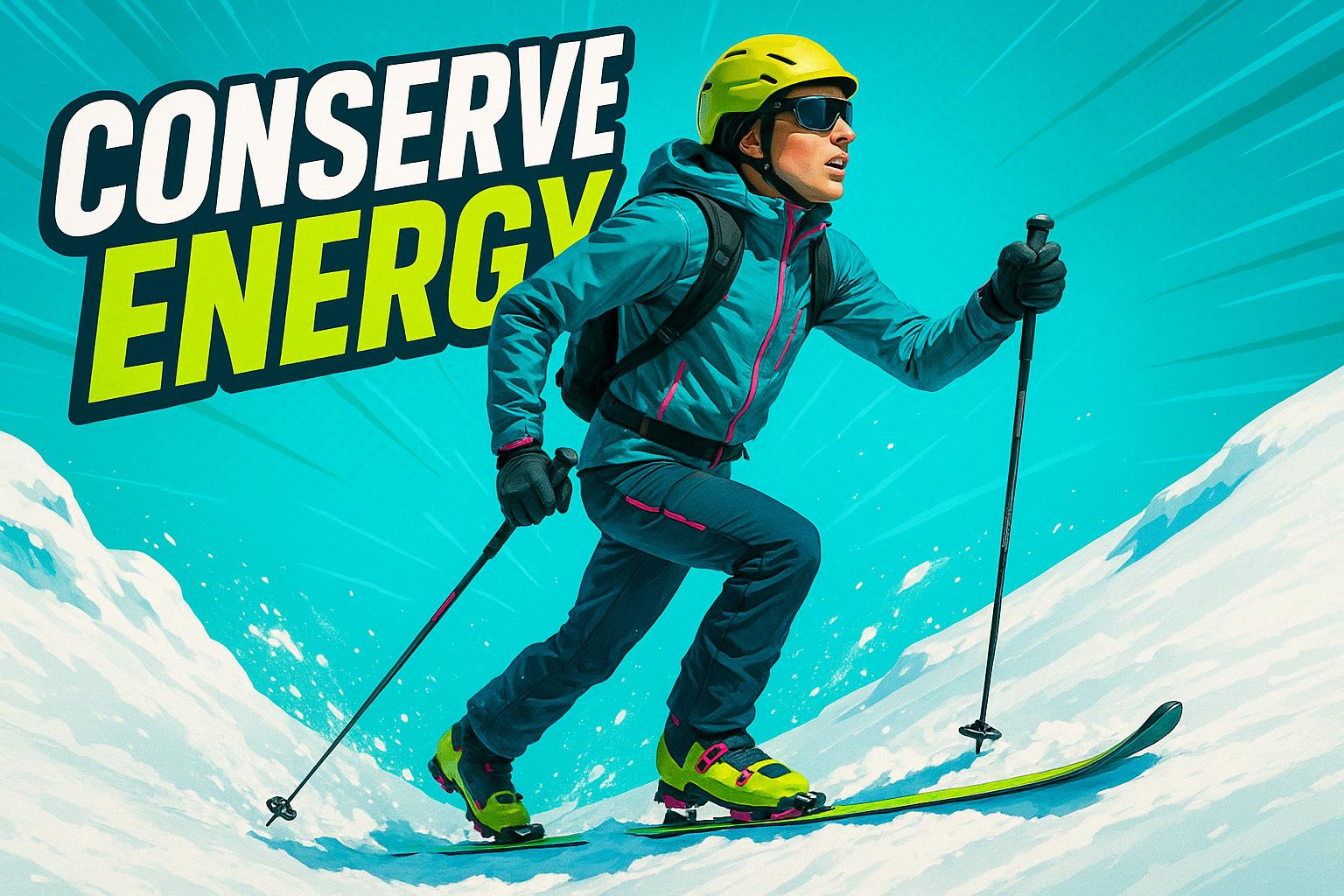
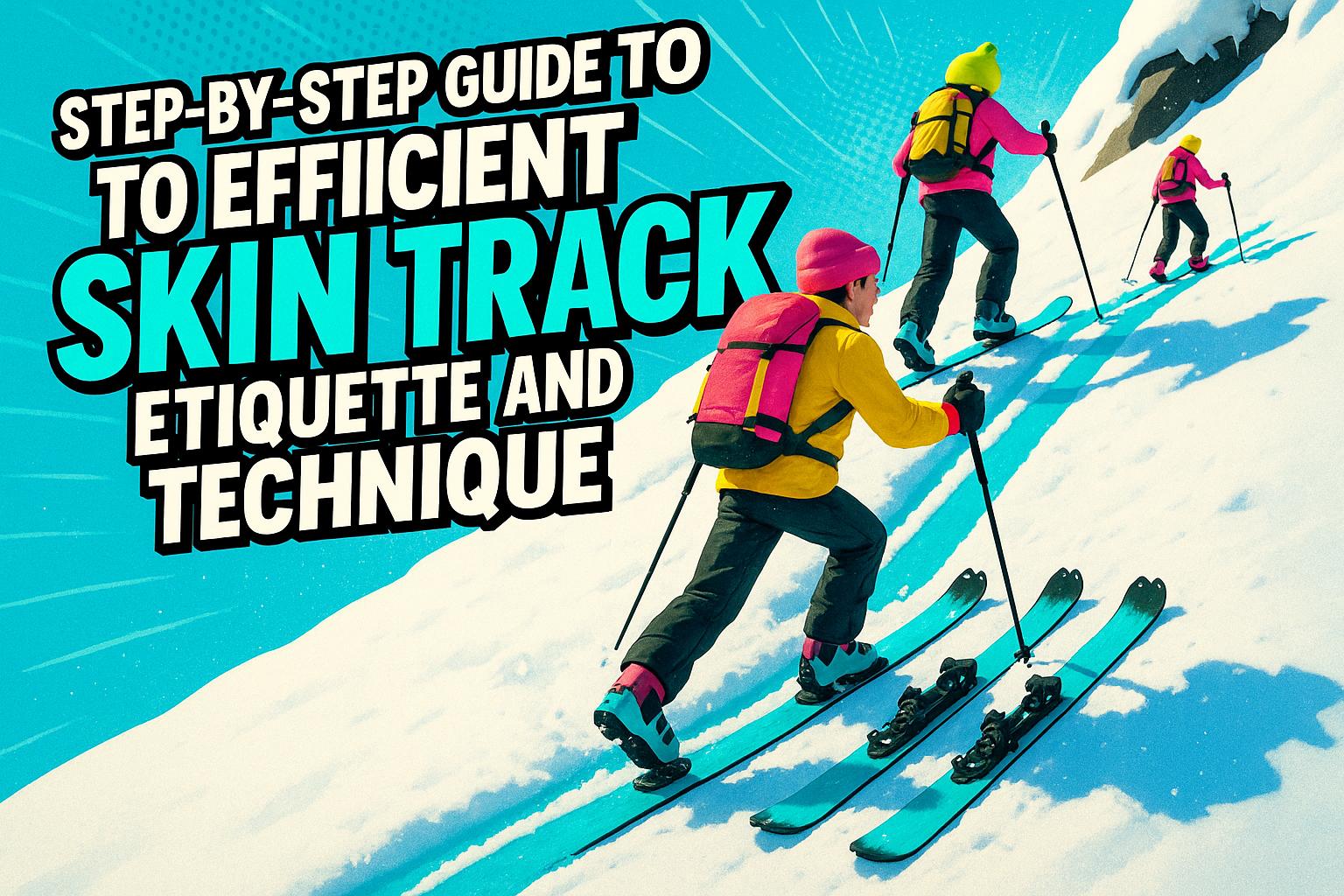

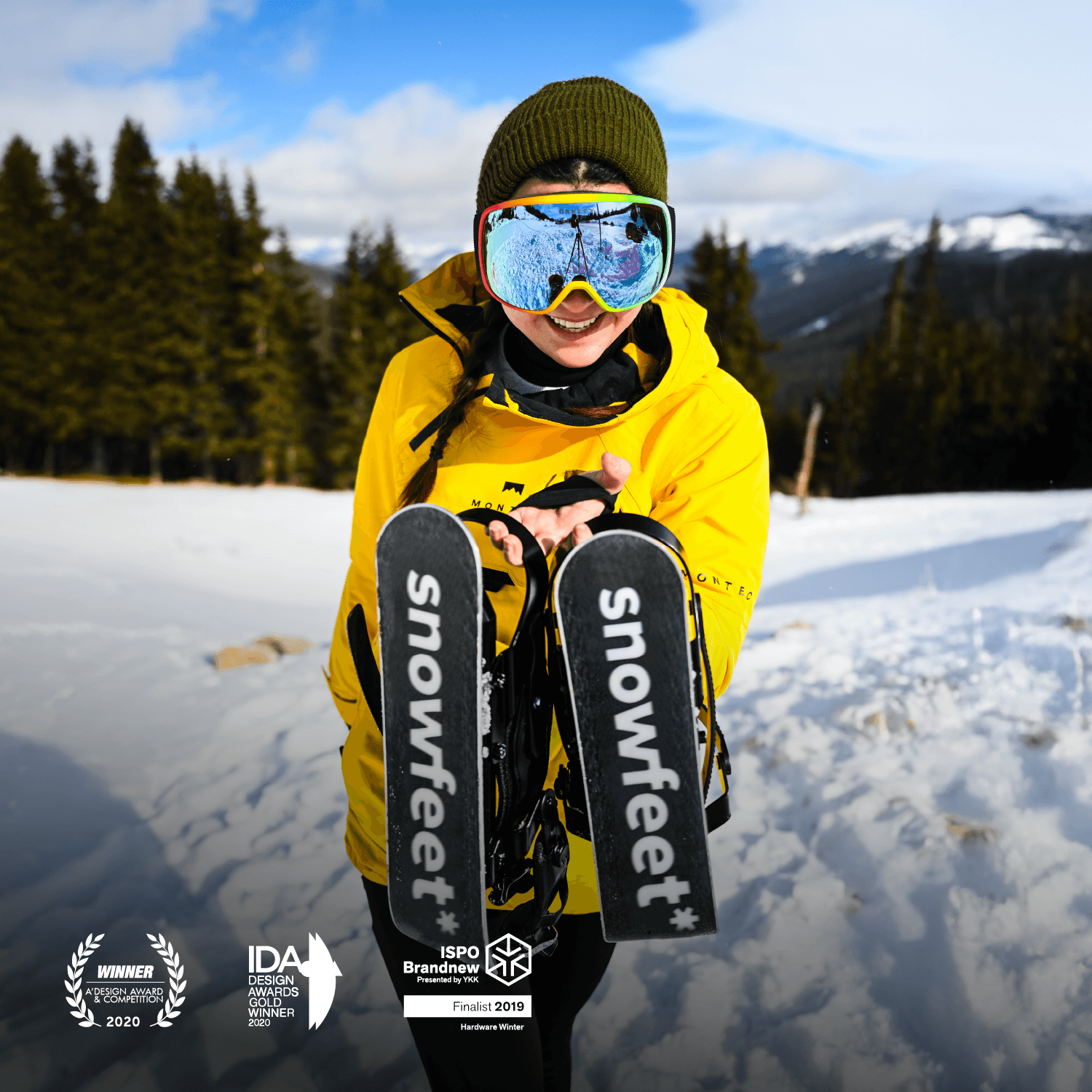

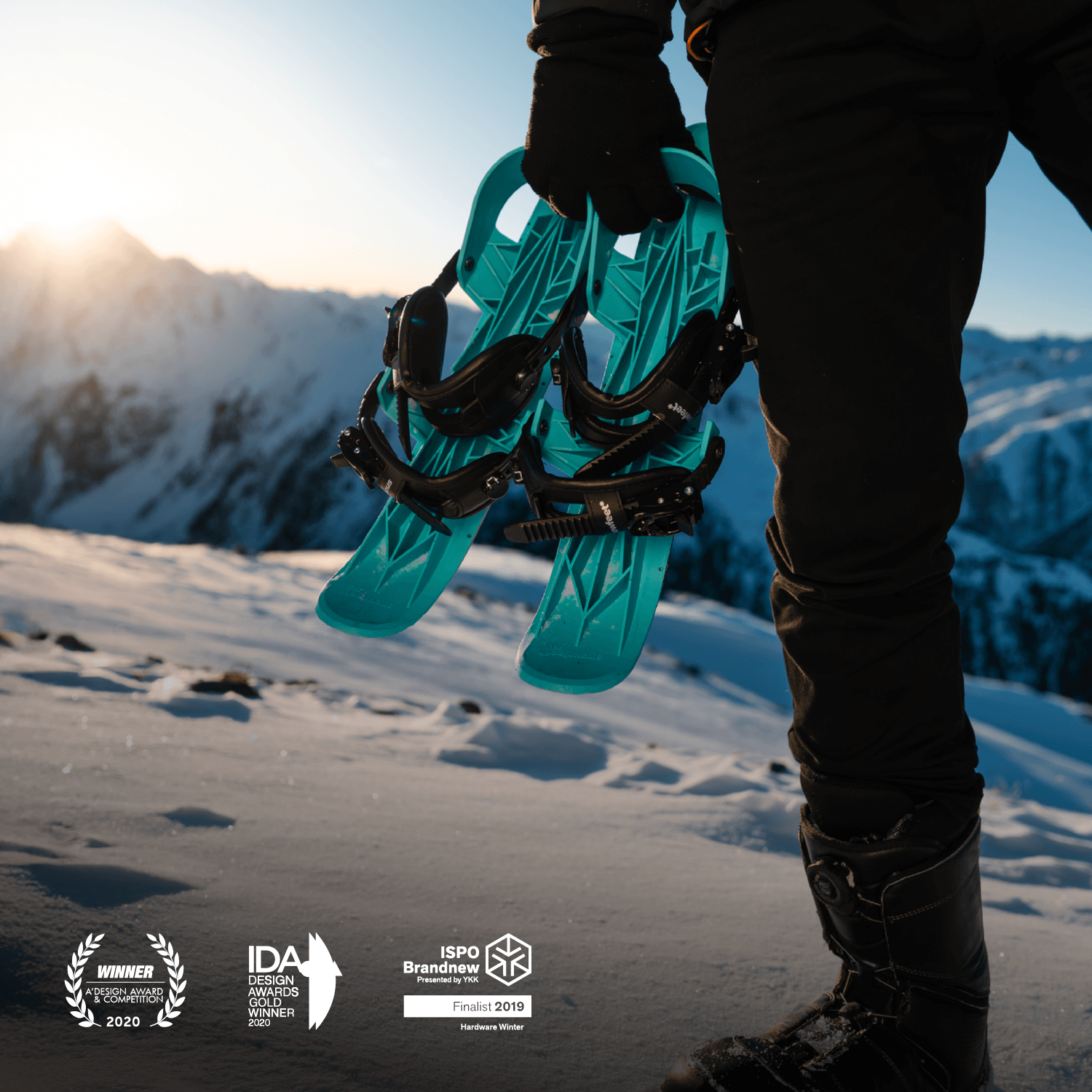
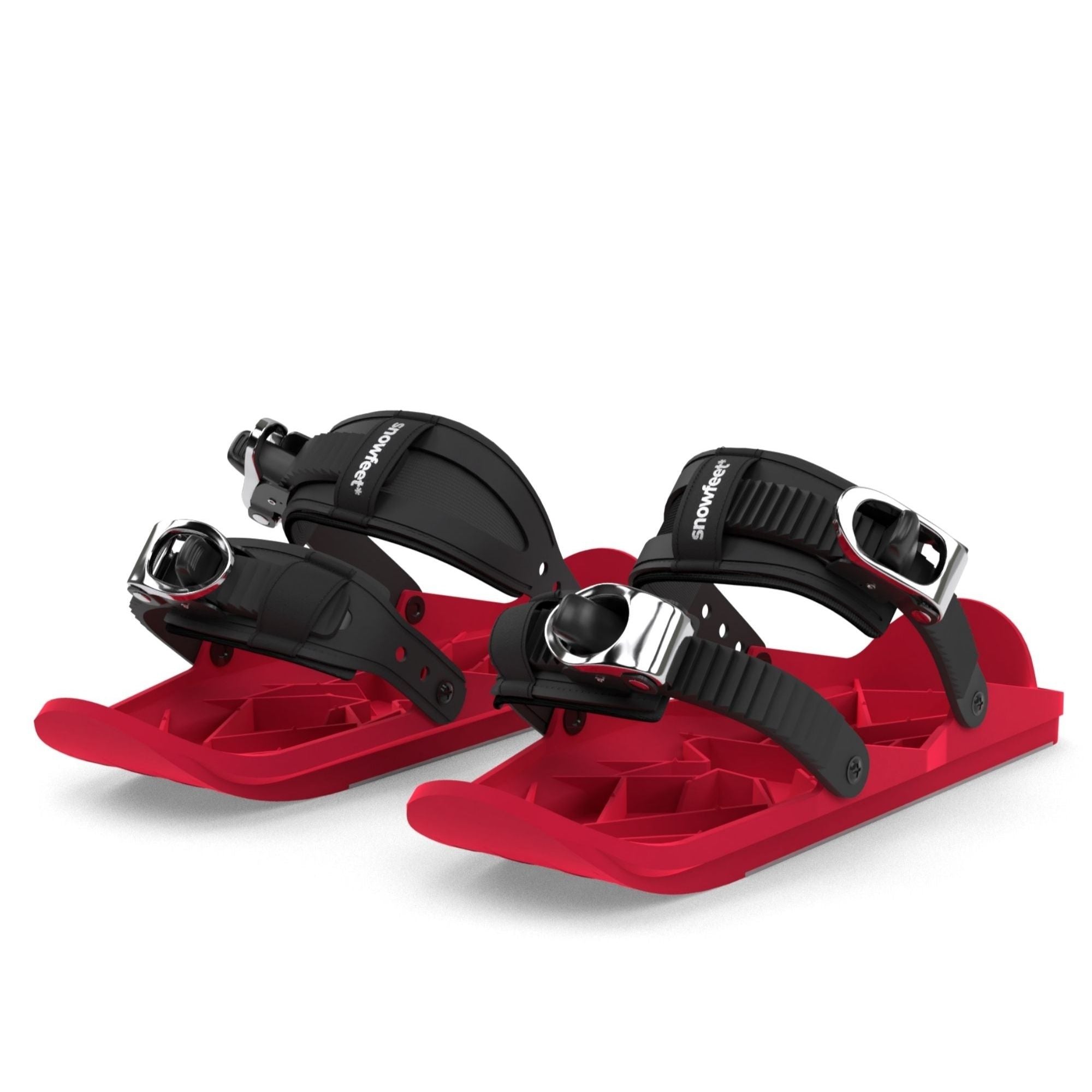



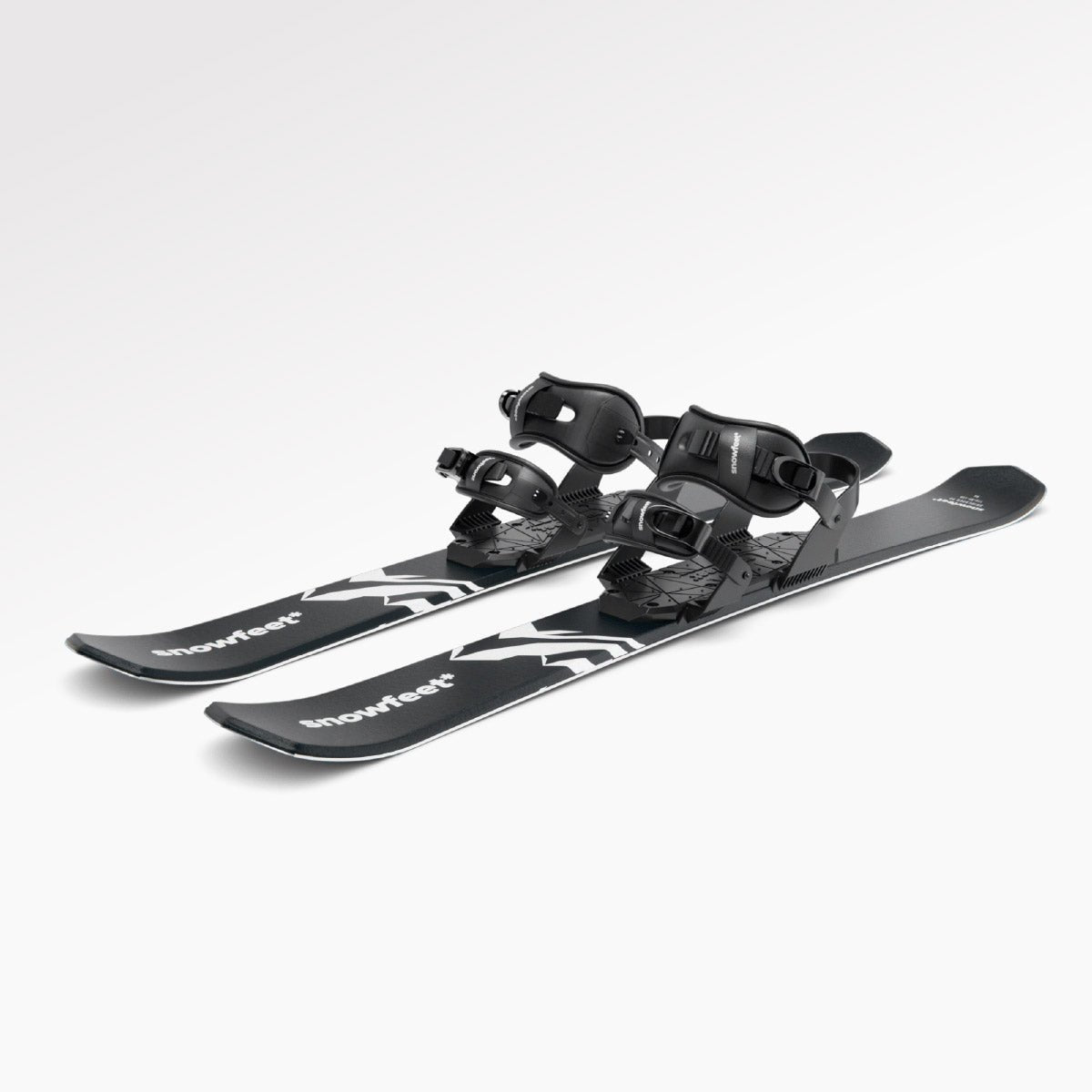
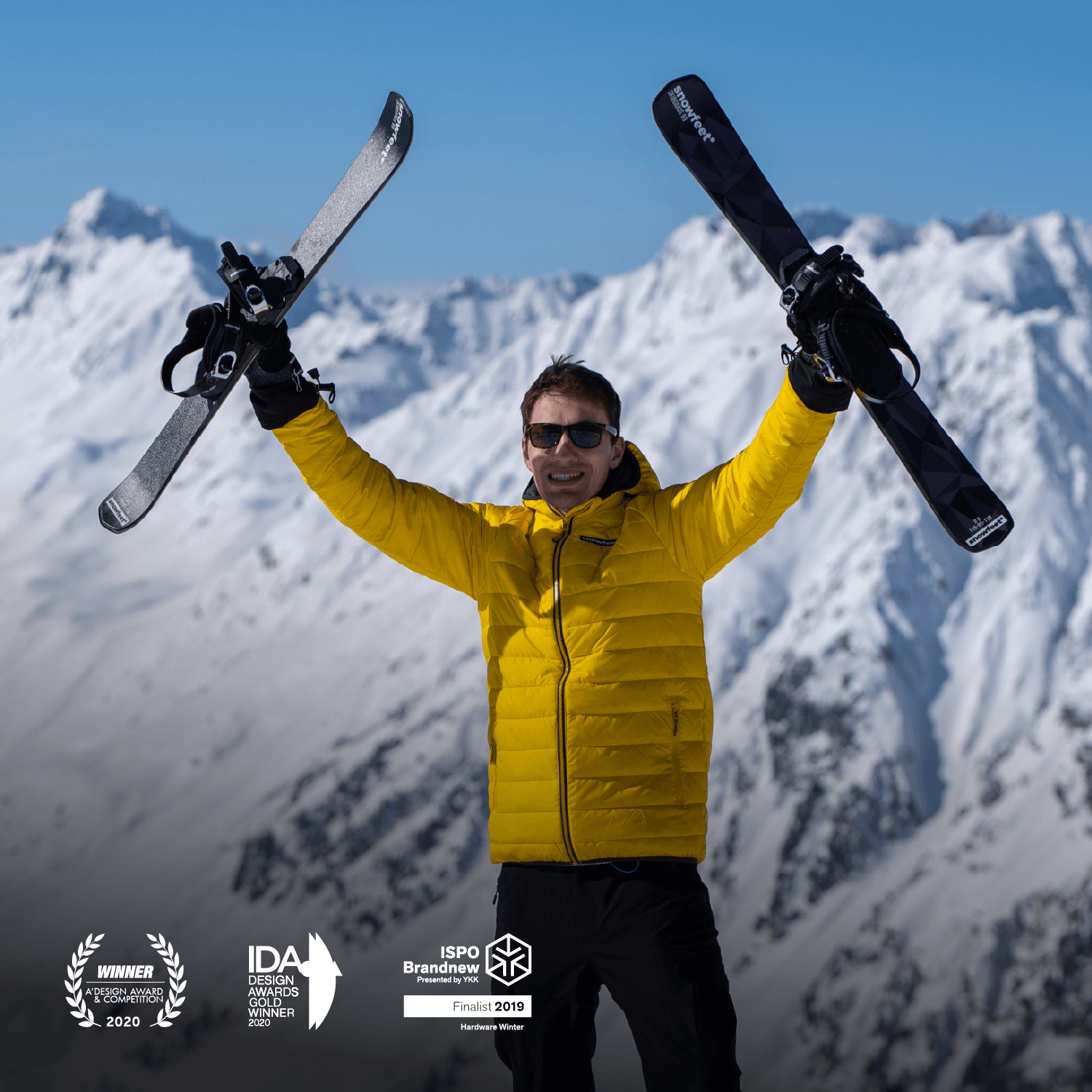
Laat een reactie achter
Deze site wordt beschermd door hCaptcha en het privacybeleid en de servicevoorwaarden van hCaptcha zijn van toepassing.